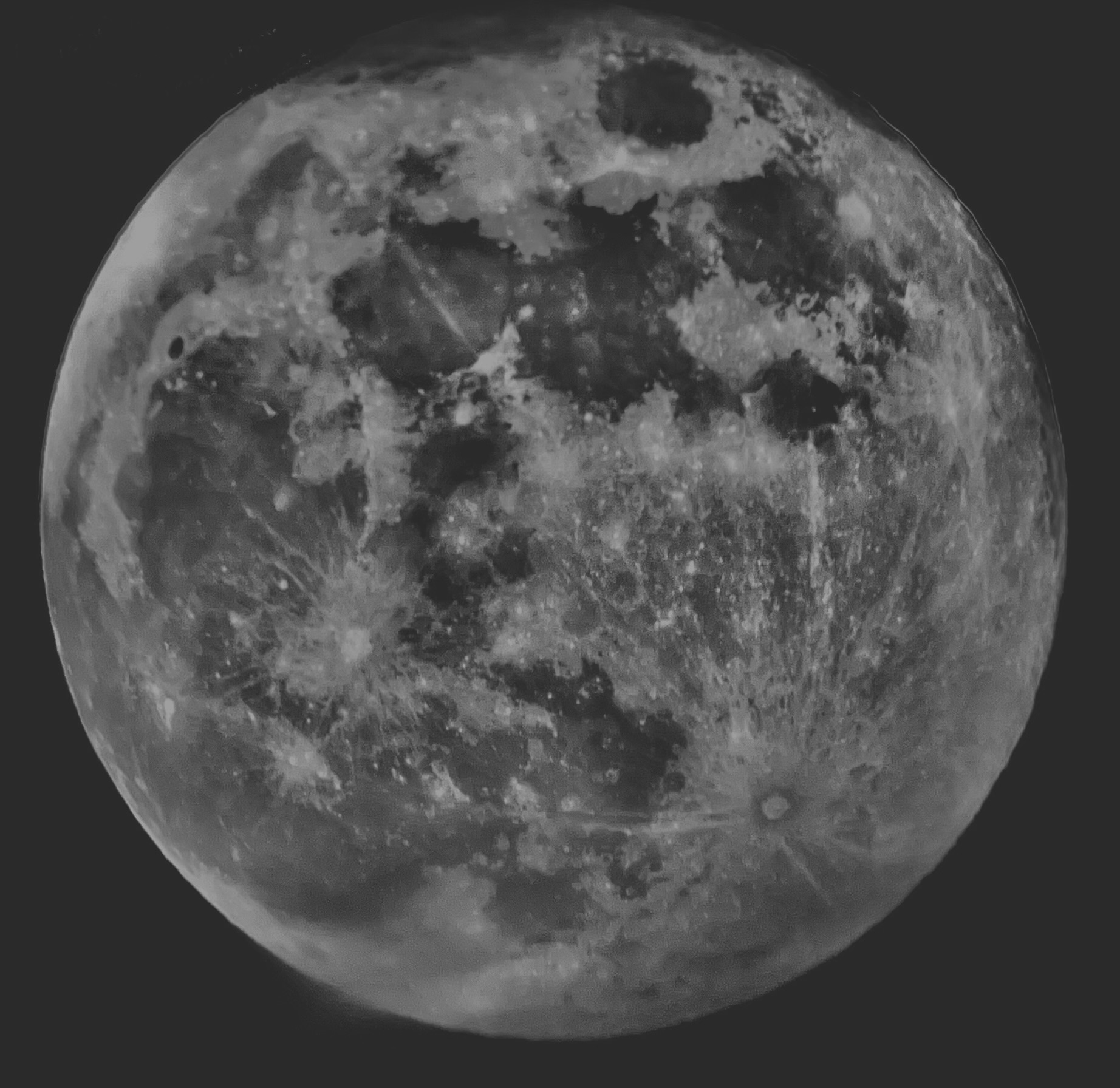
The Starry Scoop: January 2024
Read your monthly astronomy news with “The Starry Scoop” by Kaitlynn Goulette! Follow them on Facebook to have their updates placed directly on your feed!
Editor: Kaitlynn Goulette
January 2024, Edition 46
WHAT’S UP
The Winter Hexagon has moved into center stage and acts as a helpful guidepost to the night sky. This asterism consists of the 1st magnitude stars Sirius, Rigel, Aldebaran, Capella, Pollux, and Procyon with another bright star, Betelgeuse, lying in its central region. Another useful guidepost is the three belt stars of Orion the hunter. These stars are positioned in a line that points northwest to the face of Taurus the bull. In the other direction, they point to Sirius, the brightest star of the nighttime sky.
Following sunset, Saturn is visible in the southwestern sky all month long and remains observable until early February. On the 13th and 14th, the crescent moon joins the Ringed Planet and makes for a great photo opportunity. High in the southern sky is Jupiter, blazing at -2.5 magnitude all month. On the 18th, the moon is positioned within a few degrees of the Jovial One.
On January 2nd, 65 years ago, the Soviet Union’s Luna 1 became the first spacecraft to escape Earth’s gravity. It was the first of several missions from 1959 to 1976 that studied the moon in preparation for future moon landings. Luna 1 was intended to crash into the moon to collect data but due to complications, it broke free of the moon’s gravity and became the first artificial satellite of the sun. To this day, the Luna 1 spacecraft circles the sun between the orbits of Earth and Mars.
We are treated to the peak of the Quadrantid meteor shower this month on the night of the 3rd and into the following morning. Annually, it runs from January 1st to the 5th and produces up to 40 meteors an hour. Astronomers believe that this shower is brought about by Earth traveling through a dust trail left behind by the extinct Comet 2003 EH1. For best viewing, find yourself in a dark place after midnight.
JANUARY’S SKY

Hold star map above your head and align with compass points.
3-4: Quadrantid Meteor Shower Peak
11: New Moon
12: Mercury at Greatest Western Elongation
25: Full Moon
OBSERVATIONS
Lani Ching, a member of the Westfield High School Space and Astronomy Club, has been putting her free time to good use by frequently utilizing her 8-inch Dobsonian telescope.
Even with her busy schedule, Lani finds herself under the stars on most clear nights. She explained that her evenings are often one or two observations followed by heading inside to warm up, only to repeat the process all over again.
Recently, Lani’s nights have begun with observations of Jupiter, Saturn, and the moon. These are some of her favorite targets and she especially enjoys capturing them with her handheld iPhone camera.
A popular target that Lani has enjoyed observing is the Pleiades star cluster, which is located in Taurus the bull. A 30mm widefield eyepiece provided a “gorgeous view of this sparkling cluster,” as she described it.
Another favorite celestial target of Lani’s is the Orion Nebula, or M42, which is a bright and beautiful star-forming region in the Orion constellation. Lani greatly enjoyed observing this object at 133 magnification. She describes this famous nebula as “breathtaking” and attempted to photograph it, which proved to be very challenging due to its low surface brightness.
OBJECT OF THE MONTH
The featured object for January is the Jellyfish Nebula, designated IC 443. This object is a supernova remnant found in the Gemini constellation at a distance of about 5,000 light-years. It’s also one of the most studied supernova remnants in the sky due to its interactions with nearby molecular clouds.
Find this object in the foot of Gemini, between the two bright stars Tejat and Propus. A telescope is needed to view this nebula and an OIII filter helps resolve its detail. Good luck!

The purpose of the Starry Scoop is to communicate current astronomy and space events. If you want to share your observations or get digital copies of the Starry Scoop, contact starryscoop@gmail.com. The Starry Scoop is now on Facebook. Clear skies!
Featured Image: The Moon by Lani Ching



